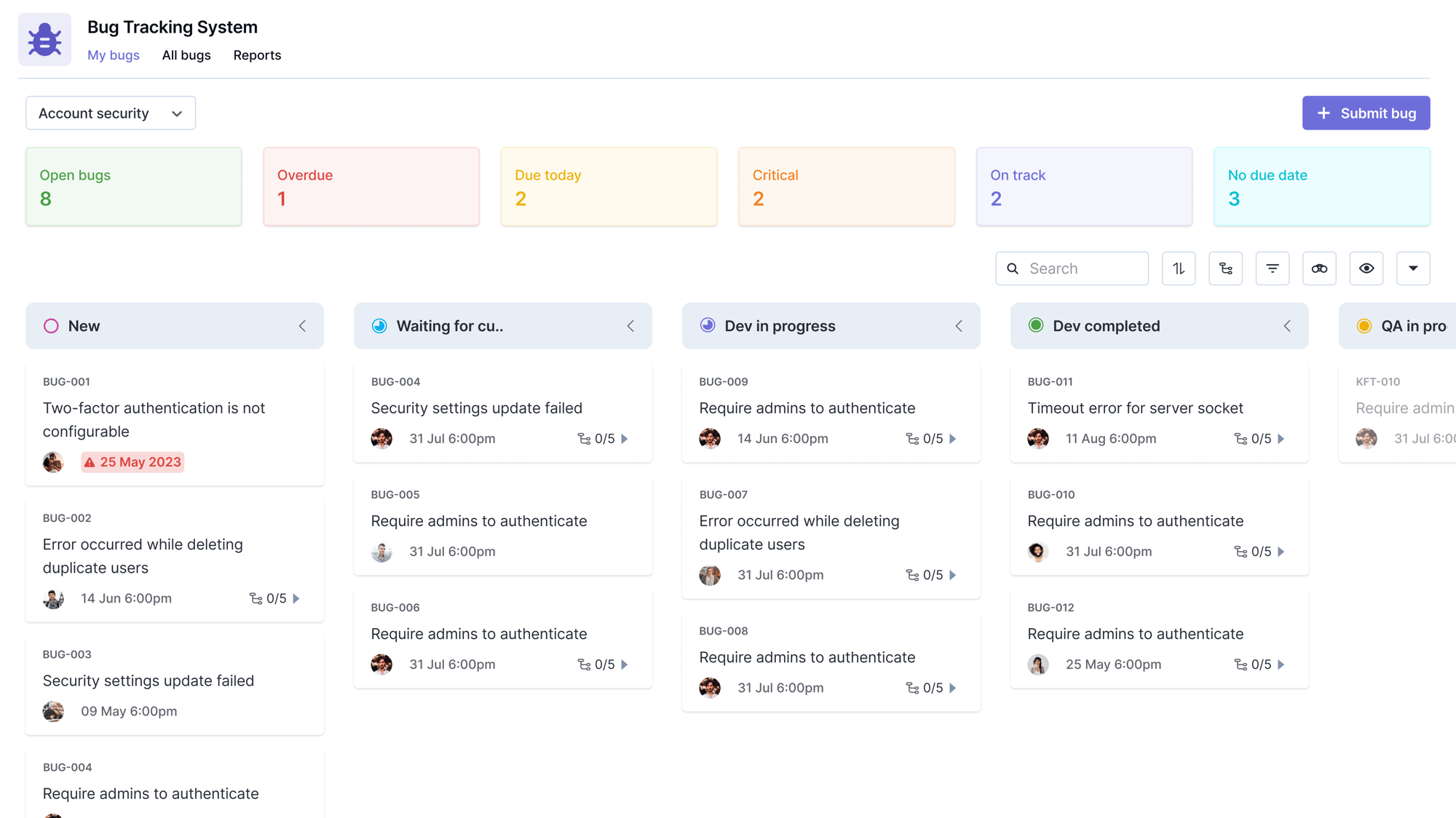Imagine you’re building a house. You need to put the walls up before you can paint them. Painting the walls is dependent on the walls being built.
Projects, just like real life, don’t happen in a vacuum and have their own sets of project dependencies and constraints irrespective of the industry. Finding an isolated project activity or task is nearly impossible as projects are inherently interconnected.
Many managers consider identifying and handling dependencies in project management as one of the most important and consequential tasks.
What are project dependencies?
Dependencies in project management deal with managing and scheduling project tasks while keeping their sequences and requirements in mind. If task B requires the completion of task A, then we’ll say that task B is dependent on task A. This may sound simple right now but in complex projects with several interdependent tasks, things can get messy.
The following are some of the important terms related to the dependencies in project management.
Constraints
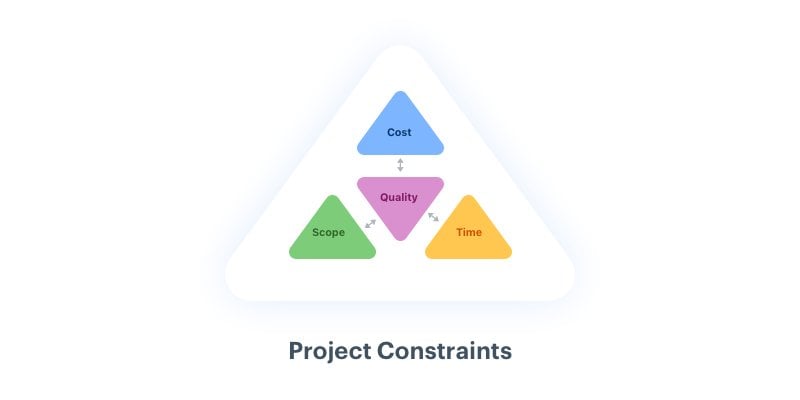
In project management, dependencies and constraints go hand in hand. Project constraints are the restrictions or boundaries within which the manager must stay while completing the project. The three major constraints of any project are
- cost
- time
- project scope.
Sometimes, dependencies in projects happen due to certain constraints in the project. For example, if your team can only afford a single software developer, then the tasks where you need a developer will be dependent on each other.
Lead and Lag
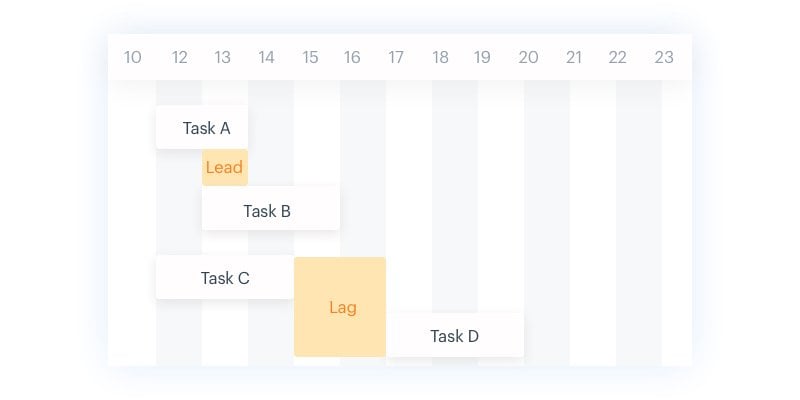
Lead is a unique concept that is only applicable to ‘finish to start’ relationships, more on that later. It refers to the time by which the succeeding tasks get accelerated with reference to the preceding tasks. While the FtS relationship demands that the succeeding tasks can not start before the end of preceding tasks, project managers apply lead times to reduce the overall time of the project.
Lag is not restricted by the type of relationship. It refers to the time delay between tasks when no resources are in use. While undesirable, lag time is sometimes necessary to ensure the completion of the project. When you paint a room, the extra time required to let it dry before you start hanging your pictures is the lag time.
Critical Path
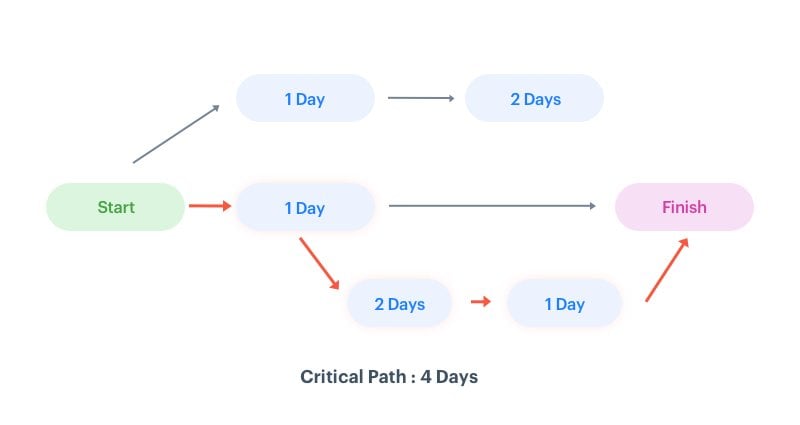
The chain of continuous activities that lead to the completion of a project is the project’s critical path. If any tasks in the critical path get delayed, the entire project will be delayed by the same time unless another critical task is completed ahead of time to make up for it.
Types of dependencies in project management
Dependencies can be of different types as internal and external factors can affect them. The following are some of the major categories of project dependencies.
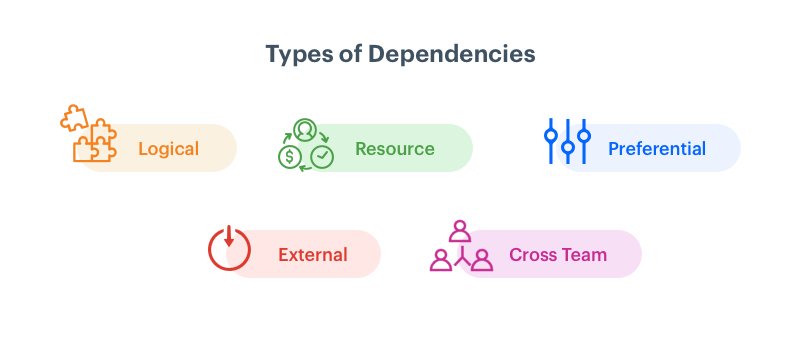
1. Logical dependencies
Also known as causal dependencies. These dependencies are an inherent part of the project and cannot be avoided. Tasks characterized as logical dependency usually use the output of the preceding tasks as input so you can’t run them in parallel.
Consider baking a cake as your project. You can’t start the process unless you have all the ingredients you need.
2. Resource dependencies
This dependency originates from a project constraint as it deals with the availability of shared resources. If two tasks require the same resource for completion, then they’ll be dependent on the completion of the other.
3. Preferential dependencies
These dependencies generally depend on the team members, other stakeholders, and industrial practices. Preferential dependencies arise when tasks are scheduled to follow developed standard practices.
In most cases, the project can compete even if you ignore the preferential dependencies in your tasks, but there will be some quality issues.
4. External dependencies
No matter how much you plan, there are things bound to be out of your control. Some tasks are dependent on outside factors and project managers can’t do anything to influence their project progress. To deal with these dependencies, it’s recommended to have a backup plan.
Delays from the suppliers or other unforeseen circumstances may take place which can affect your progress. A good project manager always makes some contingency plans so everything keeps running smoothly even in the face of adversity.
5. Cross-team dependencies
This is a common occurrence in large organizations. Sometimes multiple teams work on a single, complex project and they rely on each other to complete the project on time. Effective project time management can be implemented to avoid long hours.

Want to learn project management but put off by jargon?
Learn what's important in the simplest ebook for non-project managers.
Download NowUnderstanding task dependencies in a project
Understanding and identifying the relationship between dependencies in task management is an important part of a project manager’s job description. The following are the relationships of four types of task dependencies in project management.
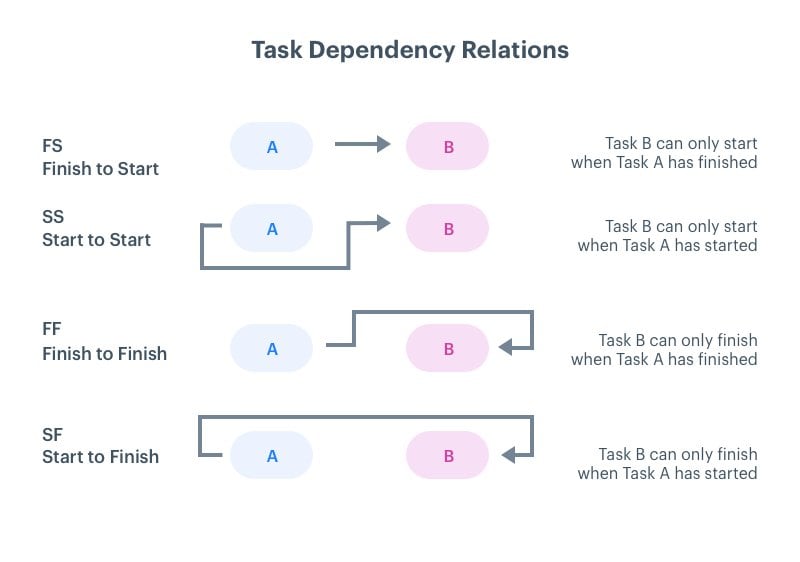
- Finish to start (FtS): Task B cannot start until Task B is completed. For example, you need to assemble your pizza before you slide it into the oven.
- Finish to finish (FtF): Task A can only finish when Task B ends. In software development, the QA team finds and reports bugs (Task A) and the engineering team fixes them (Task B). In this case, testing is complete only when bug fixes are completed.
- Start to start (StS): Task B cannot start before Task A starts. When Asphalt is poured on the road, it must be immediately leveled as it dries up quickly. So, the tasks of pouring Asphalt and leveling road must start together.
- Start to finish (StF): Task B must start for Task A to be completed. Consider the post of a security guard. A night guard will not be relieved until the morning guard takes charge.
How to manage dependencies in project management
Similar to many other challenges in project management, there is no textbook way of dealing with dependencies. How you’ll deal with them depends on the requirements and the conditions of the project at hand.
However, there are some common things that all managers do to successfully deal with dependencies in their projects.
Identify and visualize
It’s important to identify and record all the dependencies during the project plan. Otherwise, you’ll risk making things complicated because, without proper task management, the chances of your project succeeding become slim.
Visualizing data can help you recognize dependencies. This is where tools like Gantt charts come in handy. Kanban boards also work great but you’ll have to configure them with labels.
Schedule Your Personalized Free Demo for Kissflow Low-Code Platform
Engage with stakeholders
Managers need to take project stakeholders on board so that everyone involved stays on the same page. You have to ensure that the stakeholders understand the major dependencies and how each of them will affect the project.
Make a risk log
Understanding project dependencies are great for risk mitigation. Once you have identified all dependencies, it’s time for you to know how they’ll affect your project if something goes wrong. Most projects are usually vulnerable to external dependencies that you have no control over.
Many constraints also have certain risks associated with them so you’ll have to be prepared for them as well. Once you have identified and listed down all lists, it’s time to reduce their impact on your project.
Make contingency plans
Just knowing the dependencies and the risks is not enough. You have to ensure that even if anything goes wrong, the project remains on track and completes successfully. Proper project risk management allows you to save valuable time and enter ‘damage control’ mode as soon as things start to go south.
Creating buffers to minimize the effect of dependencies is also a great mitigation strategy to ensure project time tracking and the successful completion of your project on time.
Stay on top of things with Kissflow Project
Whether you are a trained project manager or have project management thrust upon you, you’ll need to rely on technology to complete the job. Kissflow Project makes project management simple and intuitive for everyone. The cloud-based project management software comes with integrated features like task management and real-time tracking to help you deal with all challenges a project manager might face.
It doesn’t matter if you are on-site or are working from your home in isolation, you’ll always be on top of things with Kissflow Project live access and cross-platform availability. Sign up for Kissflow Project and start using it for free.
Your search for Project management has landed you here. Wondering why?
As a user, you'll experience the full value of Kissflow by implementing it across departments for diverse use cases rather than just addressing isolated needs like a project management tool for a single team or department.

%20(2).png?width=2000&name=PSE%20Dashboard%20(3)%20(2).png)
.png?width=2000&name=Dashboard%20(5).png)
